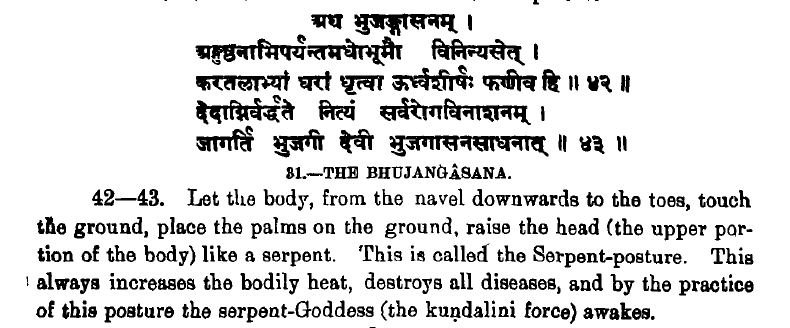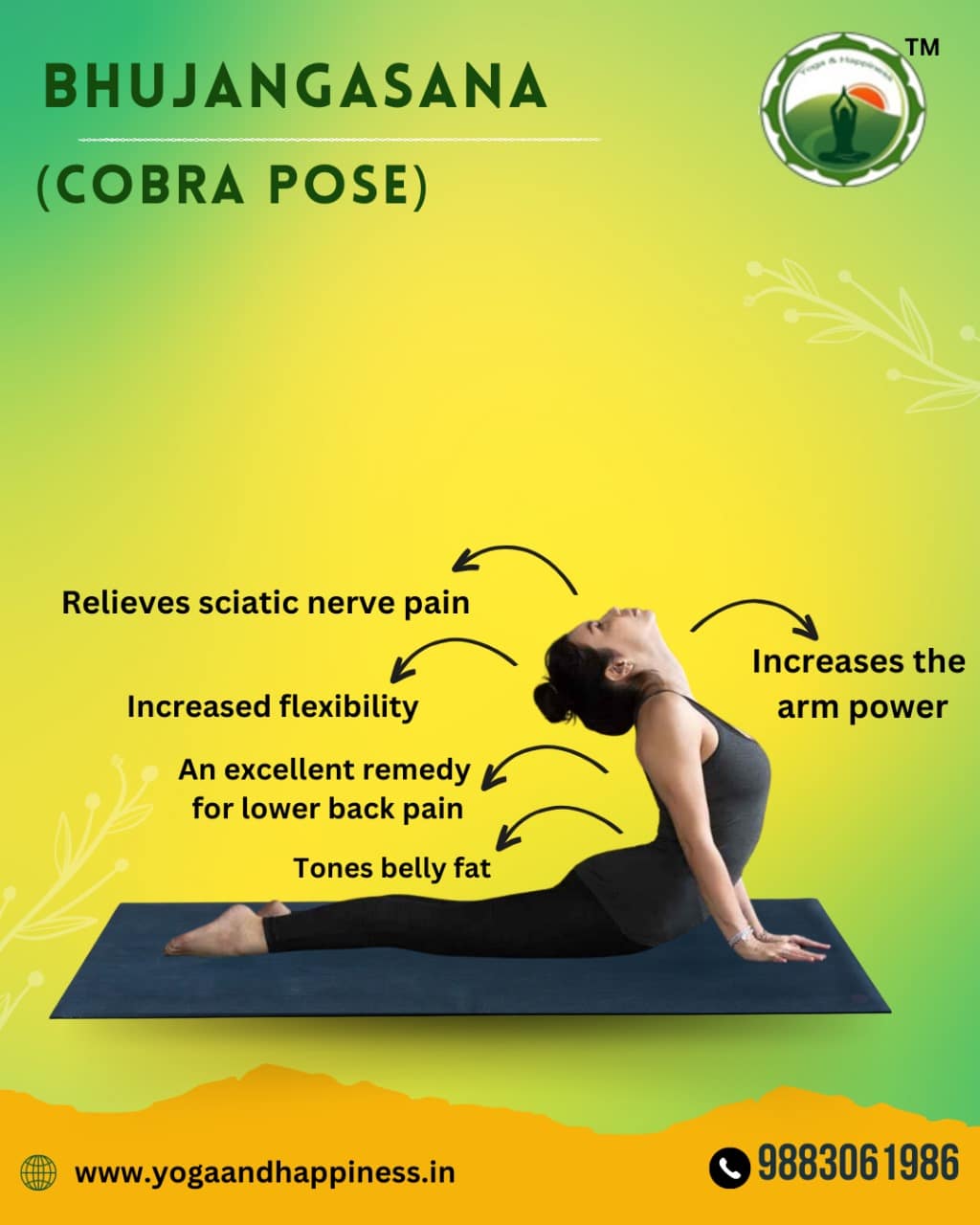Bhujangasana
16 Feb 2024
Bhujangasana, also known as Cobra Pose, is a yoga asana that involves arching the back and lifting the upper body while keeping the lower body grounded. Here’s a step-by-step guide on how to practice Bhujangasana:

- Starting Position:
- Begin by lying down on your stomach on a yoga mat.
- Place your forehead on the mat and keep your legs together with the tops of your feet touching the floor.
- Hand Placement:
- Position your hands next to your shoulders, with your palms facing down and fingers spread wide.
- Your elbows should be close to your body.
- Leg Position:
- Press the tops of your feet into the mat and engage your leg muscles.
- Keep your feet hip-width apart.
- Inhale and Lift:
- Inhale as you slowly lift your head, chest, and upper abdomen off the mat.
- Use the strength of your back muscles to lift, not your hands.
- Elbow Position:
- Keep your elbows slightly bent and hug them into your sides.
- Ensure your shoulders are away from your ears.
- Arching the Back:
- Arch your back gently, focusing on creating a smooth curve in your spine.
- Avoid straining your lower back or forcing the arch.
- Neck Position:
- Keep your neck in a neutral position, and don’t overextend it by looking up too much. Your gaze should be forward or slightly upward.
- Breathing:
- Breathe deeply and slowly in the pose.
- Feel the expansion of your chest and the stretch in your spine.
- Hold the Pose:
- Hold the Bhujangasana for 15-30 seconds initially, gradually increasing the duration as you become more comfortable with the pose.
- Exhale and Release:
- Gently exhale as you lower your upper body back to the mat.
- Rest your forehead on the mat and relax.
Tips:
- Ensure that the pubic bone remains in contact with the mat to protect your lower back.
- Keep your shoulders relaxed and away from your ears.
- If you have lower back issues, approach the pose with caution and consider consulting a yoga instructor or healthcare professional.
Benefits:
- Strengthens the spine: Bhujangasana helps in strengthening the muscles of the spine, promoting a healthy and flexible back.
- Improves posture: Regular practice of Cobra Pose can contribute to better posture by opening up the chest and shoulders.
- Stimulates abdominal organs: The pose massages and stimulates the abdominal organs, which can aid digestion and improve organ function.
- Tones buttocks: Bhujangasana engages the muscles in the buttocks, helping to tone and strengthen them.
- Opens the heart center: The chest expansion in this pose helps open the heart center, promoting emotional well-being.
- Increases lung capacity: The pose involves deep breathing, which can help expand the chest and improve lung capacity.
Contraindications:
- Back injuries: Individuals with recent or chronic back injuries, such as herniated discs, should avoid or modify this pose.
- Pregnancy: Pregnant women, especially in the later stages of pregnancy, should avoid Bhujangasana as it puts pressure on the abdomen. A modified version with the support of props might be more suitable.
- Wrist or carpal tunnel issues: People with wrist injuries or carpal tunnel syndrome should be cautious as Bhujangasana requires weight-bearing on the hands.
- Headache: Individuals with headaches or migraines should avoid excessive backward bending, as it may exacerbate the condition.
Limitations:
- Lack of flexibility: Some individuals may find it challenging to lift the chest and bend backward initially, particularly if they have stiffness in the spine or shoulders.
- Neck strain: Care should be taken to avoid straining the neck by dropping the head too far back. The gaze should be directed upward without compressing the back of the neck.
- Overexertion: Practitioners should avoid forcing the body into the pose and listen to their body. Overexertion can lead to muscle strain or injury.
It’s essential to practice Bhujangasana under the guidance of a qualified yoga instructor, especially if you have any pre-existing health conditions or concerns. Additionally, individuals should consult their healthcare provider before starting a new yoga practice, especially if they have specific medical conditions or concerns.


